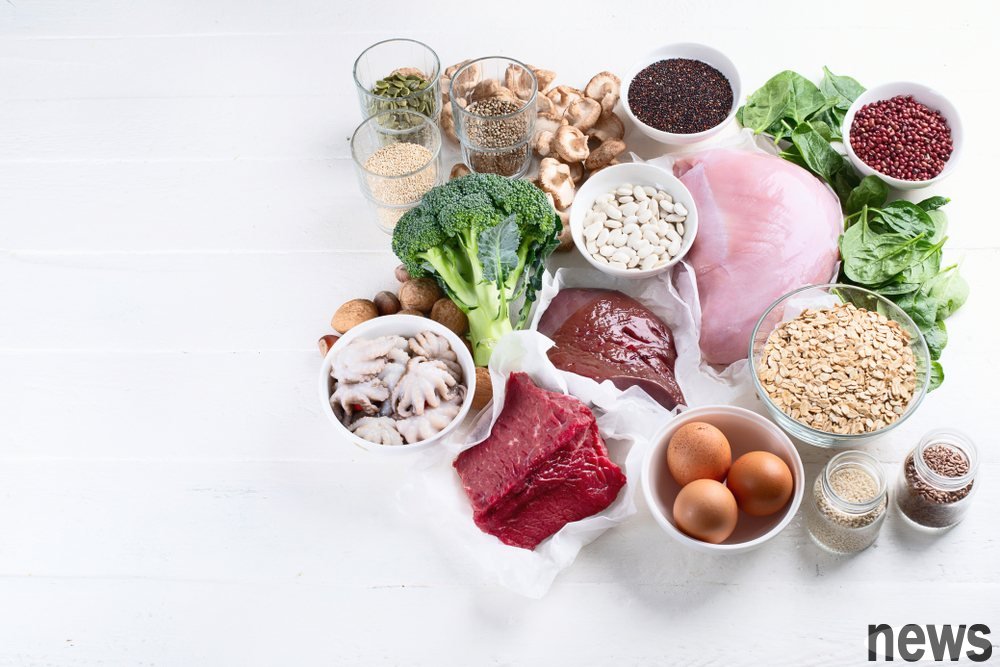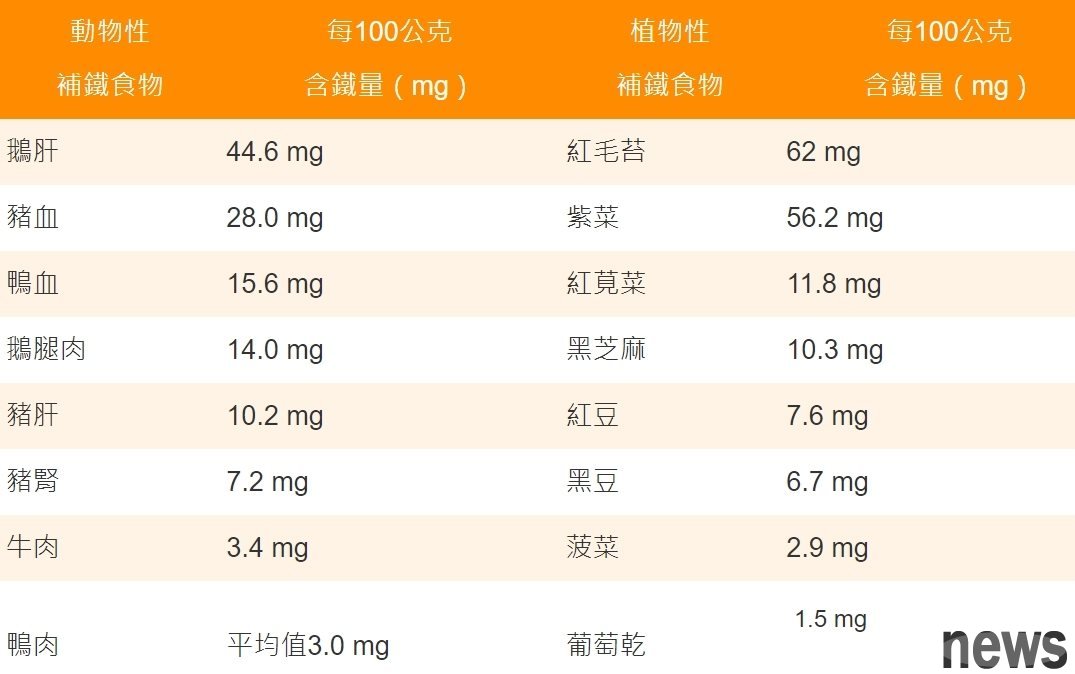
The National Health Administration stated that shortages are common public nutrition issues in all countries around the world. Young people, children, adolescents, children, children and pregnant women are all high-risk groups for shortages. Deficiency of iron can cause symptoms such as head and fatigue, and may lead to deficiency of iron blood in the long run.
Iron is an indispensable element in maintaining life. Iron will not only cause headaches and fatigue, but long-term deficiency will also lead to iron deficiency blood. The National Health Administration said that iron deficiency is a common public nutrition issue in all countries around the world. Young people, children, adolescents, women with aged women and pregnant women are all high-risk groups for iron deficiency. What are the symptoms of iron deficiency? What are some iron supplement foods? What is the recommended daily iron intake? This article allows you to understand the ranking of iron-containing foods at once.
{9 Iron is the main element that forms red blood cells and can help the blood deliver oxygen to all parts of the body; iron protein can help muscles store oxygen, and iron is one of the components of myofibens; iron quality helps the immune system maintain normal operation to resist external bacteria; iron is also an indispensable molecular structure for many enzymes in the body. The recommended daily intake of ironAccording to the eighth edition of the National Health Administration's "Reference Intake for National Dietary Nutrition" , the recommended daily intake of iron quality is as follows:
Year/Iron Daily Intake (mg)
. 0~6 months: 7 mg. 7 months to 9 years old: 10 mg
. 10-18 years old: 15 mg
. 19-50 years old: male-10 mg; female-15 mg
. Aged 51 and above: 10 m
The National Health Administration also reminds that since the amount of iron intake in the diet is not sufficient to supplement pregnancy, blood loss during childbirth and lactation, it is recommended that iron salts be supplied to 30 mg of iron every day from the third stage of pregnancy to two months after childbirth.
Deficiency of Iron SymptomsDeficiency of Iron can cause fatigue, but most people rarely realize it is caused by insufficient Iron. According to Dr. Chen Jiongyu, who is preventing medical health management in Changchun Ivy, iron deficiency may cause the following symptoms:
. Nails are prone to cracking: The nails are thinner, prone to cracking or sunken.
. White complexion: Lack of hemoglobin will affect skin color, whiteness and no redness.
. Often tired: lack of iron will affect the energy supply of cells and easily feel tired.
. Palpitations: If the blood is insufficient oxygen and the heart beats faster, palpitations will occur.
. Hair loss: Lack of iron quality can cause hair follicles to fail to obtain sufficient oxygen and nourishment, which can easily lead to hair loss.
. Easy to breathe: If you can breathe even when walking, it may be caused by physical deficiency.
Blind legs syndrome: Patients feel that their legs are numb and erectile slimming, and current studies believe that lack of iron may also lead to Blind legs syndrome.
Headache and pain: A decrease in the amount of oxygen consumed in the blood will lead to insufficient oxygen supply in the brain, which can easily cause blood vessels in the brain to expand, leading to headache and pain.
In addition, long-term iron deficiency may cause iron deficiency blood, which may occur with fatigue, weakness, headache, inattention, fear of cold, shortness of breath, rapid heartbeat, white skin, hair loss, fragile nails, and pica (such as cravings for ice or other non-food items).
What are some iron supplement foods? Iron-containing food rankingSince iron is the essential nutrient with the lowest absorption rate, it is recommended that the intake is more than five times the physiological need. In addition, women usually need higher than men due to their physiological characteristics and pregnancy needs. Su Qiyuan Nutritional Teacher published an article to share the ranking of animal and plant-based iron-containing foods:

7 major factors affecting iron absorption
There are obvious foods containing iron, why are there still shortages of iron? The following 7 points may be the reasons that affect iron quality absorption:
. Food form: Most of the irons in animal foods are blood-based irons, which have a higher absorption rate than non-blood-based irons contained in plants.
. Vitamin C: can increase the absorption of non-blood matrix iron.
. Acid substances: Acid substances such as gastric acid, apple acid, tartaric acid, and tric acid can increase iron absorption.
. The body’s demand for iron: When the body lacks iron, the absorption rate of iron will double.
. Oxalic acid, phytic acid, cynonic acid: oxalic acid contained in vegetables, phytic acid contained in all grains, beans, stone fruits, and cynonic acid contained in tea and coffee, will be combined with iron to reduce iron absorption.
. Too many other minerals: too many copper, galvanic, calcin, etc. will also reduce the absorption of the iron.
. Too many fibers: Too many fibers are combined with the iron in the kidney, which will reduce the absorption of the iron.
Overdose of iron supplementation 6 major side effectsReplenishing iron through natural foods will not cause toxicity, but taking large amounts of iron agents may cause kidney mucosal bleeding, excessive blood oxygen, hormone acidosis and kidney failure, etc. If the iron agent is used in a long-term high dose, it will cause hemoglobinosis and cause cirrhosis.
The National Institute of Health journal also pointed out that taking iron supplements containing 25 mg or more will reduce the absorption of the iron and blood concentration of the iron, and high doses of iron supplements can cause gastric tract reactions, including: stomach inappropriate, constipation, haemorrhea, abdominal pain, vomiting and abdominal distension. It is recommended that iron supplements from diet can reduce the occurrence of these side effects.
